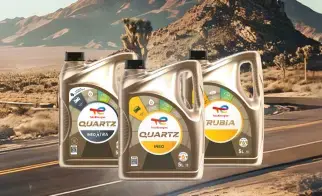AdBlue®: what it is and how it works
If you own a diesel, chances are you need to use AdBlue® - a diesel exhaust fluid (DEF) used in millions of cars, light commercial vehicles, HGVs, buses and coaches across the world.
But what is it, what does it do, what is it made of, how does it work and how do you best use it to ensure your car performs efficiently and safely?
Read on to learn more and have all your AdBlue® questions explained.
You might also be interested in

Find the right oil for my car
Our LubAdvisor tool can help you find the right engine oil for your car

Buy our engine oils
Click and hit the road with our engine oils on Amazon

How to guides
Our guides help you understand more about uses and types of motor oil

Our lubricants catalogue
Browse both the TotalEnergies and Elf brand ranges